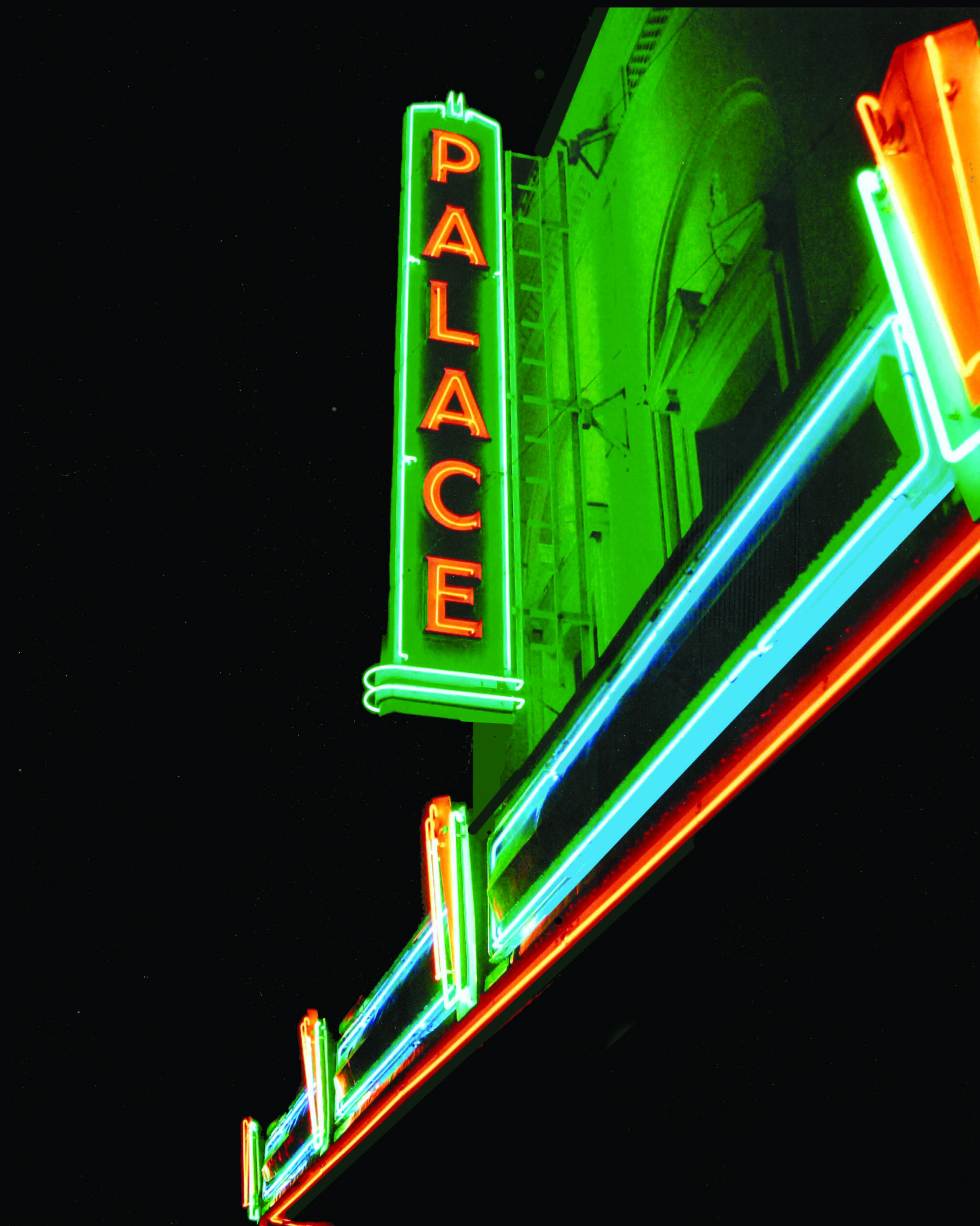The Palace Theater Pipe Organ from 1925 to current day
History of the Palace Theater Pipe Organ
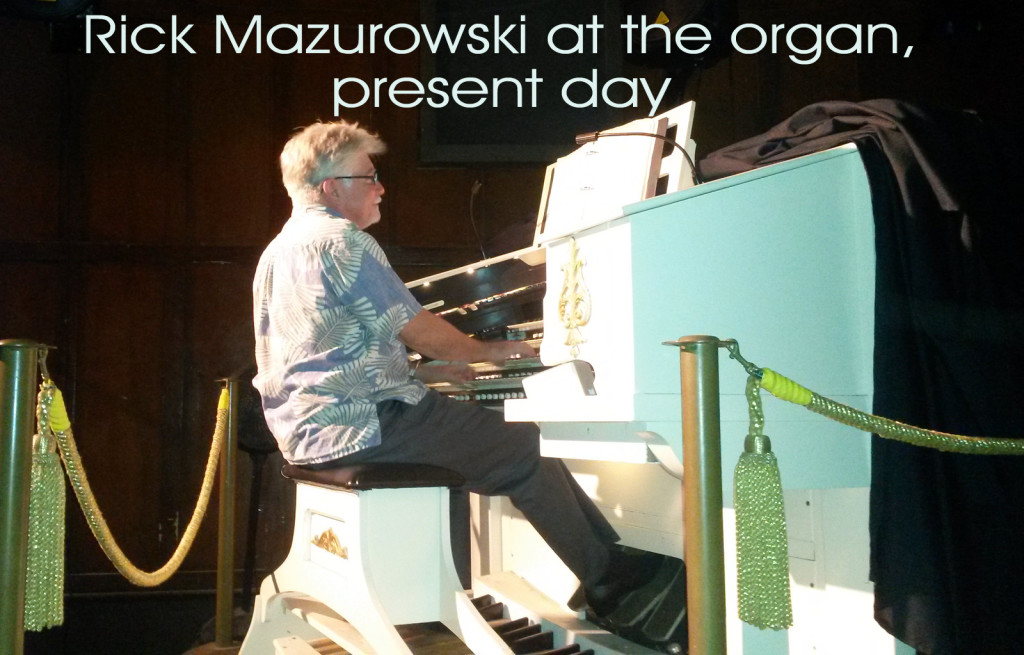 The mighty Palace Theatre Organ is a precious reminder of by-gone days of large movie houses, with hilarious silent films accompanied by live organ music. Our current pipe organ console and pipes have traveled through a long and twisted road to now be installed in our 1925 theater.
The mighty Palace Theatre Organ is a precious reminder of by-gone days of large movie houses, with hilarious silent films accompanied by live organ music. Our current pipe organ console and pipes have traveled through a long and twisted road to now be installed in our 1925 theater.
(From Wikipedia): “The pipe organ is a musical instrument … that produces sound by driving pressurized air (called wind) through pipes selected via a keyboard. Because each organ pipe produces a single pitch, the pipes are provided in sets called ranks, each of which has a common timbre and volume throughout the keyboard compass. Most organs have multiple ranks of pipes of differing timbre, pitch and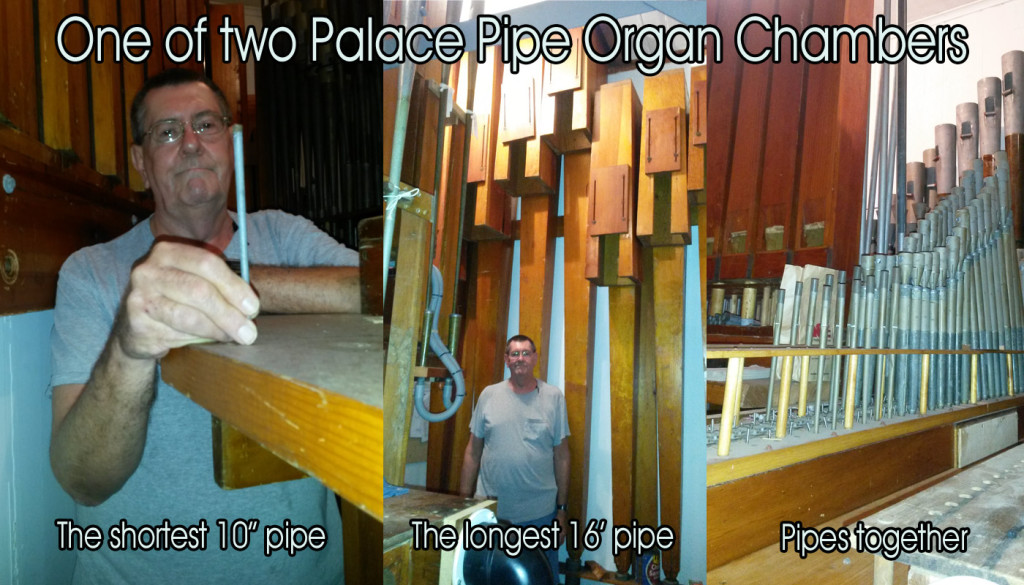 loudness that the player can employ singly or in combination through the use of controls called stops.
loudness that the player can employ singly or in combination through the use of controls called stops.
A pipe organ has one or more keyboards (called manuals) played by the hands, and a pedalboard played by the feet, each of which has its own group of stops. The keyboard(s), pedalboard, and stops are housed in the organ’s console. The organ’s continuous supply of wind allows it to sustain notes for as long as the corresponding keys are depressed, unlike the piano and harpsichord whose sound begins to decay immediately after attack.
A Timeline of the Pipe Organ
1929: A 3 manual 7-rank Robert-Morton pipe organ is built in Van Nuys, California, shipped and installed in the Palace Theater.
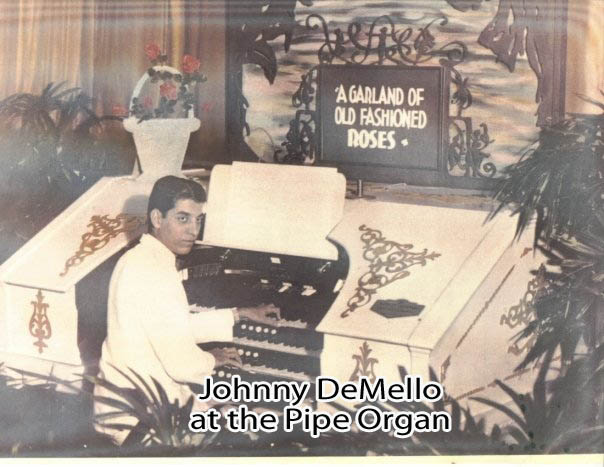 1932: Johnny DeMello becomes the house organist, accompanying silent films and giving other performances.
1932: Johnny DeMello becomes the house organist, accompanying silent films and giving other performances.
1940: The pipe organ and Johnny DeMello move from the Palace Theater to the (then) Hilo Theater.
1946: A massive tsunami hits the Hilo Theater and damages the organ console. The console is removed and sent to Honolulu for repairs.
1948: The repaired organ console is reinstalled at the Hilo Theater.
1960: A second tsunami hits the Hilo theater. The organ console is washed over the seats to the auditorium back wall where it breaks apart and is completely destroyed.
 You can see the remaining HILO sign to the right of center in the photo.
You can see the remaining HILO sign to the right of center in the photo.
1964: What remains of the pipe organ is sold to a private individual in Honolulu for installation in his family home in Manoa Valley.
1990s: The pipe organ is returned to the Palace Theater as a donation from the person who purchased and removed it from the Hilo Theater. The organ and its parts are stored at various locations in Hilo until re-installation can begin.
2000: Reinstallation of what remains of the Palace Theater’s original pipe organ begins. During its time in storage and installation in Honolulu, the organ is severely damaged by termites.
2002: The Waikiki Theater in Honolulu closes and the Robert-Morton pipe organ installed there is donated to the Palace Theater by Consolidated Amusement Co, Ltd to be added to the original pipe organ console. Before the demotion, removal and transportation to Hilo begins.
2004: Installation of the console and additional pipes and other equipment gleaned from the Waikiki Theater begins.
2004 to present: One set of pipes remains to be installed. Maintenance and repairs are ongoing.
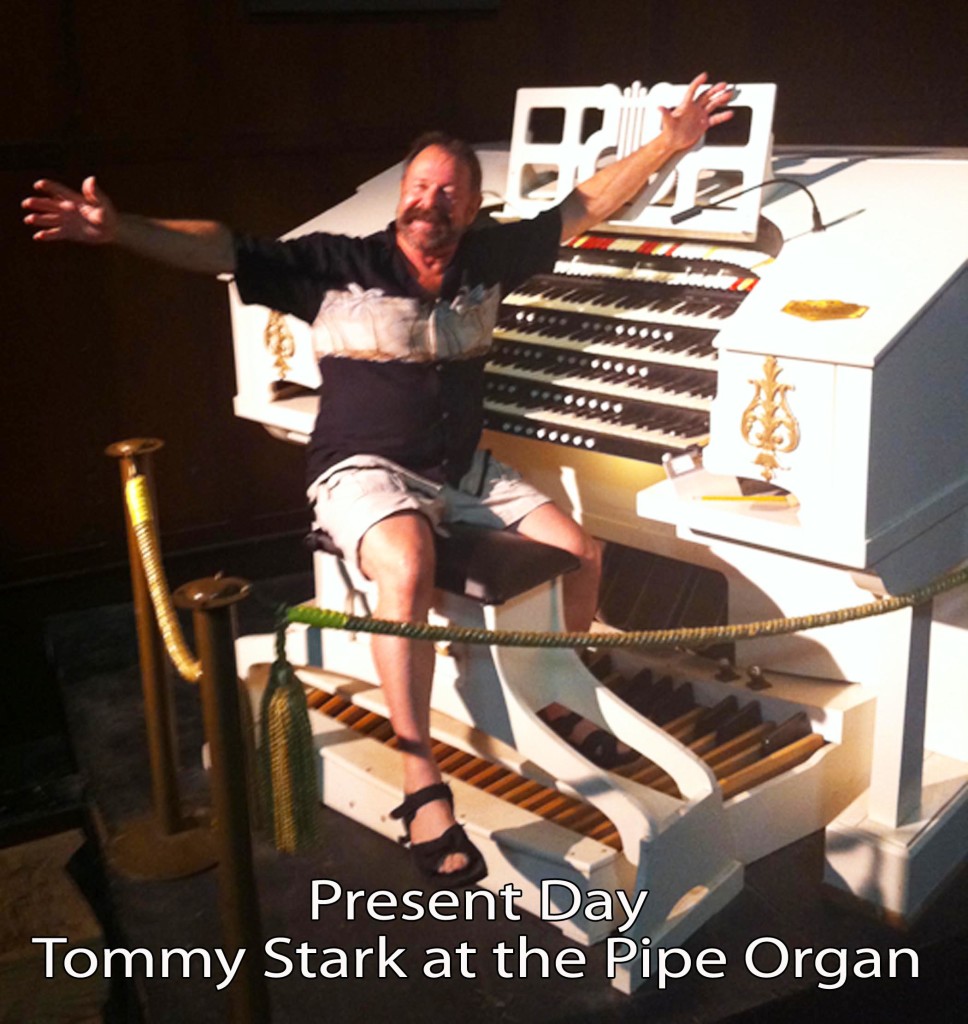 Present: The “Mighty Palace Pipe Organ” is up and functioning and can be heard from time to time before the movies and is in the spotlight during Silent Movie Nights.
Present: The “Mighty Palace Pipe Organ” is up and functioning and can be heard from time to time before the movies and is in the spotlight during Silent Movie Nights.
You can support the continued restoration and maintenance of the Mighty Palace Pipe Organ by making a tax deductible donation today!

